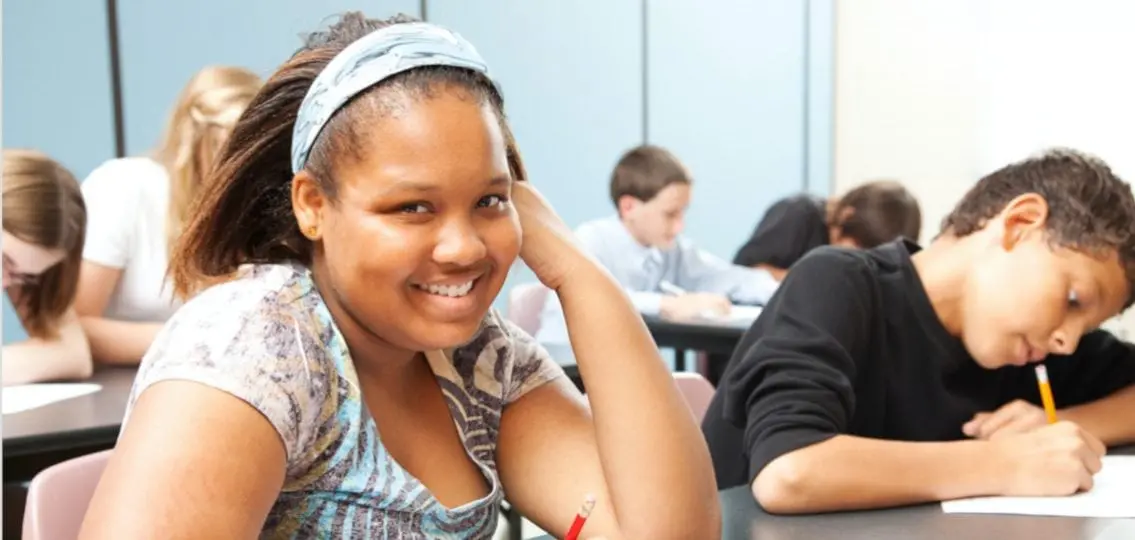Teenage anxiety is on the rise, but there are simple, research-based ways to alleviate some of the causes of anxiety and stress right in the classroom. As a high school teacher myself, I have started making these small changes and have already seen a difference in my students.
5 Simple Ways High Schools Can Help Teenagers’ Mental Health
1. Turn off the lights
That’s right, teachers need to turn off the lights in the classroom. A study at the Australian National University found that excessive exposure to fluorescent lights increases the probability of developing eye conditions such as cataracts and pterygium.
Fluorescent lights also affect the brain, interfering with the body’s circadian rhythm by delaying the production of melatonin. In the long run, these lights are affecting sleep patters and causing teenagers to feel, and actually be, more tired.
What can teachers do? For starters, turn off the lights and open windows and blinds to allow more natural light to stream into the classroom. Or teachers can hang strands of lights or place small lamps around the classroom. The warm glow from softer lighting can help reduce headaches and eye strains.
They can also have a positive effect on students’ mental health. Classrooms with low lighting help teens manage their emotions and make more rational decisions. Natural light can give them a happiness boost and soothing purple- and blue-hued lights can lower high blood pressure and reduce emotional and mental stress.
Whatever lighting options teachers decide to use, turning off the florescent lighting will bring noticeable changes in the classroom.
2. Play calming music
Think about the last time you went to the spa or got a massage. The calm, quiet music encourages you to relax. From the dimmed lighting to the calming music, patrons are almost certain to leave with a sense of peace.
Schools can encourage the same peaceful well-being. Imagine walking into the school building and hearing soft, instrumental music playing over the PA system. Students would experience a less stressful start to their school day before they even entered the classroom.
According to research at Florida National University, playing music in the classroom while students work, take tests, or read helps lower blood pressure, heart rate and anxiety level. Music also has the power to improve mood, increase focus, and even alleviate pain.
3. Stand up and stretch, or go outside
Teenagers spend over eight hours a day sitting. The effects of a sedentary lifestyle can lead to obesity, diabetes, high blood pressure, and heart disease. Not only does sitting for such long periods of time affect teenagers physically, it also takes a toll on their mental health and can impact creativity and intelligence.
Experts recommend taking frequent breaks from sitting and making a habit of standing up, stretching, moving around, and even going outside. By taking these simple brain breaks, teenagers are able to concentrate more, stay on task, and have an overall better sense of well-being.
4. Read for 15 minutes
Maybe I am biased on this point because I love reading, but experts tend to agree. Want teenagers to have more empathy, a better understanding of self and others, and improved well-being? Allow students to read for pleasure in class.
A 2018 National Literacy Trust report in the UK surveyed 49,047 children ages 8 to 18 years old and found that children who are active and engaged readers are three times more likely to report higher levels of mental well-being than children who do not read.
The school’s reading specialist or librarian can help teens find books related to their interests and reading level. To build up their reading stamina, they should start with five minutes of reading time and increase it to 15 minutes. It’s important to note that reading for pleasure is not a waste of class time. Reading for pleasure is class time.
5. Take deep breaths
Deep breathing can help teens transition from one activity to the next. To encourage the practice, teachers can start class by inviting students to close their eyes and place their hands on their bellies while taking five deep breaths. Inhale for four seconds, hold for four seconds, and exhale for four seconds.
Deep breathing exercises can help teens relax, manage stress, relieve anxiety and depression, and even help them get a good night’s sleep. But deep breathing doesn’t work for everyone, so students should know it’s an optional exercise that may help them feel centered as they start their day.
These five techniques for the classroom offer simple ways for teachers to boost their students’ mental health in the short-term. In the long-term, administrators can help by bringing intensive mindfulness training for teachers and students into the school. Together, teachers, educators, and parents can work to provide a healthy and welcoming environment where teens feel safe, supported, and yes, even happy.




